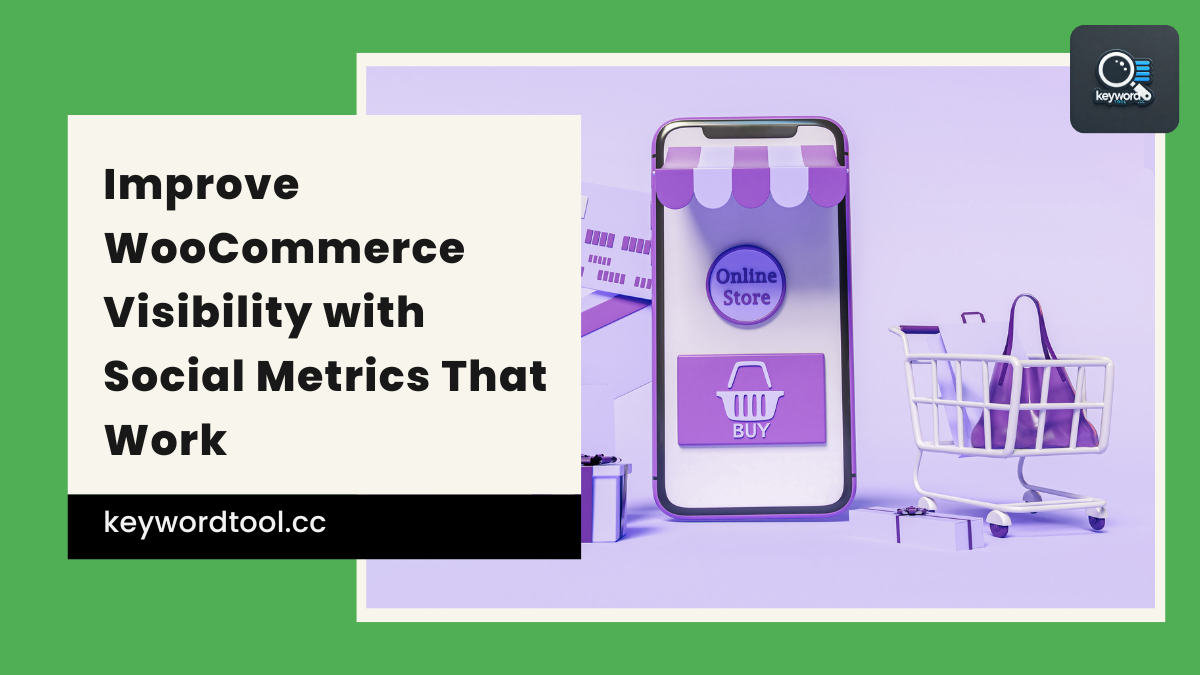Running a WooCommerce store without tracking social traction is like shouting into the void—you’re not sure who’s listening, if anyone. If you want to improve WooCommerce visibility with social metrics, it’s time to stop guessing and start measuring. Social media isn’t just for likes and shares; it can tell you what products people love, when they engage most, and which posts actually drive clicks. The right metrics can show where your efforts pay off—and where they flop—so you can focus on what works. No fluff, no jargon—just real numbers that help your store get seen by more of the right people.
Track Engagement Across Social Platforms
Clicks don’t tell the whole story. To really understand what’s working, keep an eye on how people interact with your content. Look at likes, shares, comments, and mentions across platforms like Facebook, Instagram, X (formerly Twitter), TikTok, and LinkedIn. These numbers show you what grabs attention and what gets ignored.
Not all reactions carry the same weight. A comment often means more than a simple like. Mentions can signal that someone is talking about your store even when they’re not directly sharing your post. Shares help spread your content beyond your own followers—free exposure without extra ad spend.
When engagement goes up, so does visibility on social feeds. Algorithms notice when posts get attention and tend to push them in front of more users. This ripple effect can reach new audiences who haven’t heard of your store before.
Engagement also sends signals to search engines. Google pays attention when people interact with content across different platforms. Strong engagement tells search bots that the product or post is relevant to real humans—not just stuffed with keywords for ranking purposes.
To improve WooCommerce visibility with social metrics, track these signals regularly using tools like Meta Business Suite or Hootsuite for overview dashboards. They help you see patterns over time without needing a full analytics team.
Don’t just glance at total numbers—break them down by platform and type of interaction. What gets shared on Instagram may not get clicks on LinkedIn—and that’s okay. The goal isn’t perfection everywhere—it’s learning where you connect best.
Once you know which posts earn strong responses, use those insights to shape future content or promotions around similar topics or formats. Test out variations in posting times or wording based on past performance data instead of guessing every week.
Tracking engagement helps cut through noise by showing what actually matters: how real people react to what you share online—and how that response can bring more traffic back to your WooCommerce store without paid ads doing all the heavy lifting.
Leverage Influencer Collaborations
Working with influencers isn’t just about getting likes. It’s about placing your products in front of people who already trust the person talking about them. That trust shortens the time it takes for someone to go from curious to customer. When an influencer shares your product, their followers listen—and often click.
Start by finding influencers who speak to your target market. Skip the ones with huge followings but no real engagement. Look for creators who respond to comments and get replies back. These interactions matter more than follower counts when you’re aiming to improve WooCommerce visibility with social metrics.
Once you’ve found a solid match, offer them something worth sharing—a free product, a discount code, or even commission on sales through affiliate links. Keep it simple so they can focus on creating content that feels natural to their audience.
Track what happens after each post. Watch for spikes in traffic, mentions, and—most importantly—sales connected to those posts. Use link trackers or UTM codes so you know exactly which influencer drove which result.
Don’t stop at one post either. A single shoutout may not move the needle much, but regular exposure builds recognition over time. Try ongoing partnerships instead of one-time deals.
Use these collaborations as data points too. Monitor how their posts perform across likes, shares, saves, and clicks—not just once but across several campaigns—to see what actually works best for your store.
This approach not only helps build awareness but also gives you measurable results tied directly to specific people and actions online. By focusing on influencers whose audiences match yours and tracking every step of the way, you’re not guessing—you’re using clear signals that tell you what’s working and what’s not without needing a full-time analyst behind the scenes.
Improve WooCommerce Visibility with Social Metrics
Tracking what happens after you post is just as important as the post itself. Social metrics give you real numbers to understand how your content performs. Click-through rates show if people actually visit your store from a Facebook ad or Instagram story. If no one clicks, something needs to change—maybe the headline, maybe the image.
Share counts help measure interest. If users pass along your posts, it signals they see value in what you’re offering. This kind of engagement can bring more eyes to your products without extra ad spend. More shares usually mean more traffic, and that’s something every store owner wants.
Follower growth tells another part of the story. A steady rise in followers means your brand is sticking around in people’s minds. If numbers stay flat for weeks, it’s time to review what you’re posting and when you’re posting it.
Combining these social data points helps build a clear picture of what works and what doesn’t. You don’t need fancy tools either—many platforms like Facebook Insights or Twitter Analytics already provide this info for free.
Use these insights to test changes on product pages or promotional campaigns. For example, if a certain type of product gets shared more often, feature it prominently across channels. Adjust headlines based on which ones get better click-throughs.
All this helps you make smarter choices without guessing—and that’s exactly how you improve WooCommerce visibility with social metrics that matter most for growth and exposure online.
Instead of throwing out content and hoping something sticks, let data lead the way forward by showing where attention really goes and where efforts pay off best.
Use Analytics Tools for Smarter Decisions
Guessing what works online is like throwing darts in the dark. That’s where tools like Google Analytics and Facebook Insights come in handy. They don’t just collect data — they show what people do once they land on your site. Did someone click from an Instagram post and bounce right off? Or did a visitor from a Facebook ad browse five products before checking out? These tools break it down.
Google Analytics shows where traffic comes from, how long visitors stay, and what pages keep them interested. You can see which social channels send the most engaged users. Maybe Twitter brings tons of clicks, but those folks leave fast. Maybe Pinterest sends fewer people, but they stick around longer and buy more stuff.
Facebook Insights gives you details about who interacts with your posts. You get to see age groups, locations, click-throughs, and shares. This helps you shape future posts to match what your audience responds to — not just what looks good on your feed.
When you connect this info with sales data in WooCommerce, things start to make sense. You stop wasting time on platforms that don’t convert and focus energy where results actually happen.
To improve WooCommerce visibility with social metrics, tracking behavior after the click matters as much as getting the click itself. Knowing which posts bring real customers lets you adjust content without guessing.
Use these numbers to tweak product descriptions or update blog titles that didn’t perform well last month. If one product got shared often but didn’t sell much, maybe the landing page needs better structure or clearer pricing.
Letting analytics guide decisions means no more blind posting or hoping something clicks — because now you’re watching exactly what does.
Turning Social Signals into Sales Power
As digital storefronts grow more competitive, knowing what clicks with your audience is half the battle—literally. By tracking engagement across social platforms, collaborating with influencers, and leaning on robust analytics tools, you can improve WooCommerce visibility with social metrics that actually drive results. These strategies not only spotlight what’s working but also help you pivot quickly when it’s not. The key takeaway? Social metrics aren’t just vanity numbers—they’re your roadmap to smarter marketing moves and better visibility where it counts. So go ahead, let the data do the heavy lifting while you focus on growing your brand.










